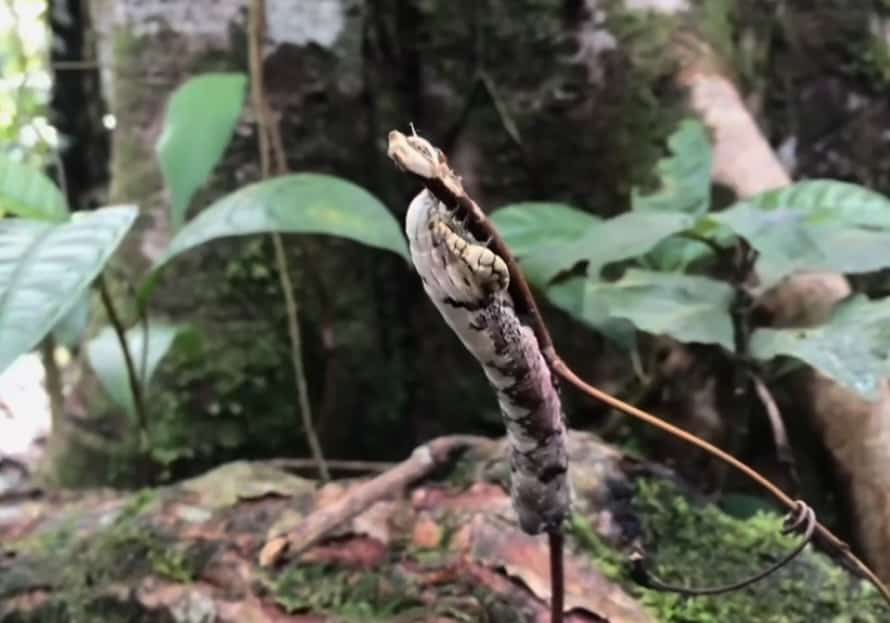When you wander through lush green gardens or dense forests, you might spot some caterpillars cheerfully munching away on plants that are notorious for their toxicity. This intriguing behavior raises an important question: How do these tiny creatures manage to devour such dangerous foliage without getting ill? In this article, we explore the fascinating world of caterpillars, uncovering the secrets behind their unique ability to feast on toxic plants without harm.
The Evolutionary Battle for Survival

Caterpillars have developed an extraordinary ability through millions of years of evolution to consume plants that could be fatal to many other creatures. This adaptation is a result of a continuous evolutionary arms race between plants and the herbivores that feed on them. As plants evolve chemical defenses to deter predators, caterpillars respond with their own biological adaptations, allowing them to consume even the most toxic of leaves.
Nature’s Chemical Defense

Plants synthesize toxins as a survival mechanism to protect themselves from being eaten. These chemicals, known as secondary metabolites, include compounds like alkaloids, terpenoids, and glycosides. While effective against many herbivores, some caterpillars have evolved ingenious methods to neutralize or tolerate these chemical defenses.
Specialized Enzymes Neutralizing Toxins

Specific enzymes in certain caterpillar species play a pivotal role in detoxifying plant chemicals. These enzymes break down toxic compounds into harmless ones, allowing the caterpillars to ingest the leaves without suffering adverse effects. This adaptation illustrates the remarkable precision of natural selection at work.
A Defensive Strategy

Many caterpillars not only process toxins through specialized enzymes but also store them in their tissues. This ability allows them to incorporate the plant’s defensive chemicals into their own bodies, turning a potential liability into an ecological weapon against predators. These stored toxins deter would-be predators from making a meal of what would be a poisonous snack.
Mimicry and Camouflage

Some caterpillars take it a step further by employing mimicry as a defensive strategy. Brightly colored caterpillars, like the Monarch butterfly larvae, use their vivid hues to signal to predators that they are not worth the trouble, being distasteful or toxic. Meanwhile, other caterpillars have succeeded in blending in with their environment, using cryptic coloration to avoid detection altogether.
The Monarch Butterfly

One of the most well-known examples of caterpillars eating toxic plants is the Monarch butterfly’s relationship with milkweed. Monarch caterpillars exclusively feed on milkweed, which contains toxic cardiac glycosides. These caterpillars absorb and sequester the toxins, which later protect the adult butterflies from predators. The unpalatable taste and toxicity deter birds and other predators from eating them.
Turning Poison into Protection

The process of sequestration involves storing certain plant toxins within the caterpillar’s body. This not only provides a deterrent to predators but also enhances the caterpillar’s own defenses. By evolving to use plant defenses to their advantage, caterpillars like the Monarch have made the toxic plants they eat a part of their very armor.
Genetic Adaptations

At the genetic level, some caterpillars have adapted to develop an innate tolerance to plant toxins. Genetic mutations may alter receptor sites or biochemical pathways, making the caterpillar immune to the effects of certain toxins. These genetic changes enable caterpillars to safely consume plants that are otherwise harmful.
Microbial Assistance

Recent studies suggest that microbes living in the caterpillar’s gut might assist in processing toxins. These symbiotic relationships indicate that the gut microbiome could play a significant role in breaking down or neutralizing toxic compounds, further allowing caterpillars to exploit a niche that others cannot.
Ecological Impact

By feeding on toxic plants, these caterpillars play an incessant role in their ecosystems, affecting plant populations and the food web dynamics. Their feeding habits can influence vegetation patterns and impact other species, including predators that rely on caterpillars as a food source. This interconnectedness highlights the broader ecological implications of their dietary choices.
Lessons from Nature

Understanding how caterpillars cope with toxic plants may have broader applications, such as developing new methods for pest control or insights into detoxification processes that could inspire human medical or agricultural innovations. Learning from these natural systems could contribute to advancements across various fields.
Nature’s Ingenious Solutions

The ability of certain caterpillars to consume and thrive on toxic plants showcases nature’s incredible adaptability and resilience. Through specialized enzymes, genetic adaptations, and even partnerships with microbes, caterpillars have found ways to turn potential adversities into nutritional advantages. As we continue to explore these unique relationships, we gain a deeper appreciation for the complexity and balance inherent in natural ecosystems.
- The Most Unusual Places in America That Have Seen Snowfall - August 16, 2025
- The Most Devastating Tsunami to Ever Strike the US West Coast - August 16, 2025
- Why Some Caterpillars Eat Toxic Plants Without Getting Sick - August 16, 2025

